It is said that your shadow never leaves you but what if you find it has – even if just for a while?
{ZSD season 2017 for India begins 10th of April when people in Kanyakumari
will observe the first ZSD.
Click here for other places in India for the ZSD date. }
Well, this is exactly what can be experienced by those at a tropical latitude – between the two tropics – the tropic of Capricorn (-23.5°) and the tropic of Cancer (+23.5°). For them, twice every year there comes a day when the Sun passes directly overhead at noon. The shadow falls directly below and seems to have disappeared. The point directly overhead is called Zenith.
For observers on that latitude – it is a Zero Shadow Day (ZSD)
For an observer in the northern hemisphere, between the winter solstice (Dec 21/22 ) and the vernal equinox (March 20/21), the shadow of a vertical object at noon always points ‘north’. After ZSD the shadow at noon points south. After the summer solstice (June 20/21) once again there is a ZSD and after this day then the shadow at noon points north again.
Exactly opposite happens for those in the southern hemisphere. For them, the ZSD is between the autumnal equinox (June 22/23)
We may note here that those north of +23.5° latitude will never see ZSD and for them, the shadow at noon will always point due north and for those south of -23.5, ° latitude the shadows at noon will always point due south.
Observing ZSD
The phenomenon itself is quite enjoyable and it carries a high value of edutainment. It is very exciting to watch one’s shadow or that of any vertical object become smaller and smaller and then disappears for a few tens of seconds and then reappear again on the other side.
The Sun subtends an angle of half a degree at the Earth and thus takes a minute to travel half its angular diameter across the sky. The phenomenon is observable for a minute or so.
The event can be used to discuss the curvature of the earth and how Eratosthenes found the circumference of the Earth.
ZSD – when and where
IITian Alok Mandavgane (MTech in Mathematics and Computing ) is an Android and Web Developer. Alok has developed an excellent app and page for finding ZSD for a given location on Earth. Please visit this link. He is a serious amateur astronomer and Joint Secretary at Aryabhat Foundation.
For those who want some quick ready info – Click here.
Here are some examples. These pictures are taken on Zero Shadow Day at a time when the Sun is exactly overhead or at its Zenith.
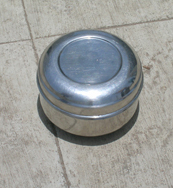 |
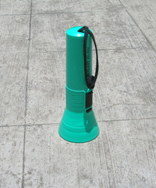 |
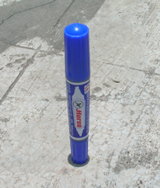 |
| A stainless steel box that has a bigger cap | A flashlight – its strap will of course cast its shadow | A marker pen that was made to stand on its narrow part |
The effect is quite dramatic with a vertical hollow pipe —
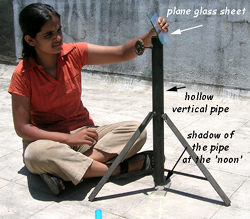 The girl is holding a plane sheet of glass right over the pipe The girl is holding a plane sheet of glass right over the pipe |
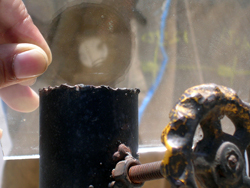 |
 |
| At the time when the sun is right overhead, she sees the bottom of the pipe. | The picture above was taken soon after the picture to the left was clicked. |
——–
–
The sequence of images below shows the progress of the shadow as the sun passes overhead. You can see that almost for two minutes the shadow of the hollow tube and the glass tumbler are perfectly circular.
[The series of pictures below are taken from a video <click here> for the video]
|
12:10 12:25 12:28 12:40
|
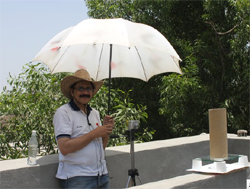 If you are going to take a sequence of pictures of this event then it is good to remember that you will be standing in the Sun that will be right overhead. Have a big umbrella and a hat over your head – keep the camera on a tripod and a bottle full of cold water – it will become warm in no time. If you are going to take a sequence of pictures of this event then it is good to remember that you will be standing in the Sun that will be right overhead. Have a big umbrella and a hat over your head – keep the camera on a tripod and a bottle full of cold water – it will become warm in no time. |
What started about 2005 or so as a part of the summer programme for the school students at Inter-University Centre for Astronomy and Astrophysics, Pune, India, (IUCAA) became quite very popular with the press and general public.


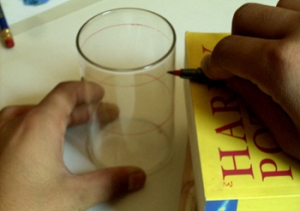


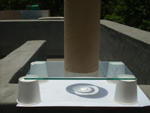 12:15
12:15 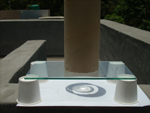 12:20
12:20 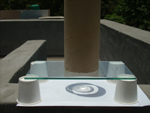
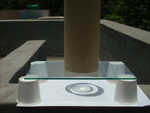 12:26
12:26 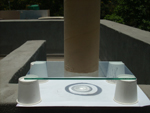 12:27
12:27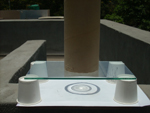
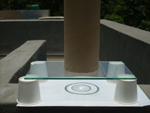 12:29
12:29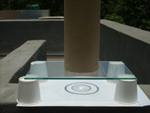 12:30
12:30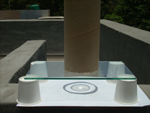
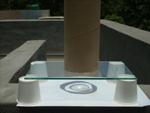 12:45
12:45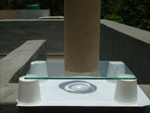 12:50
12:50
Pingback: ZSD over Indian Cities « Eyes have it – list of some beautiful celestial events
Neat presentation!
Really wonderful website! We appreciate how you bring these ideas forth with simple nice experiments…
Nice practical experiments with everyday objects. Nice post. Hope to show it to my kids!